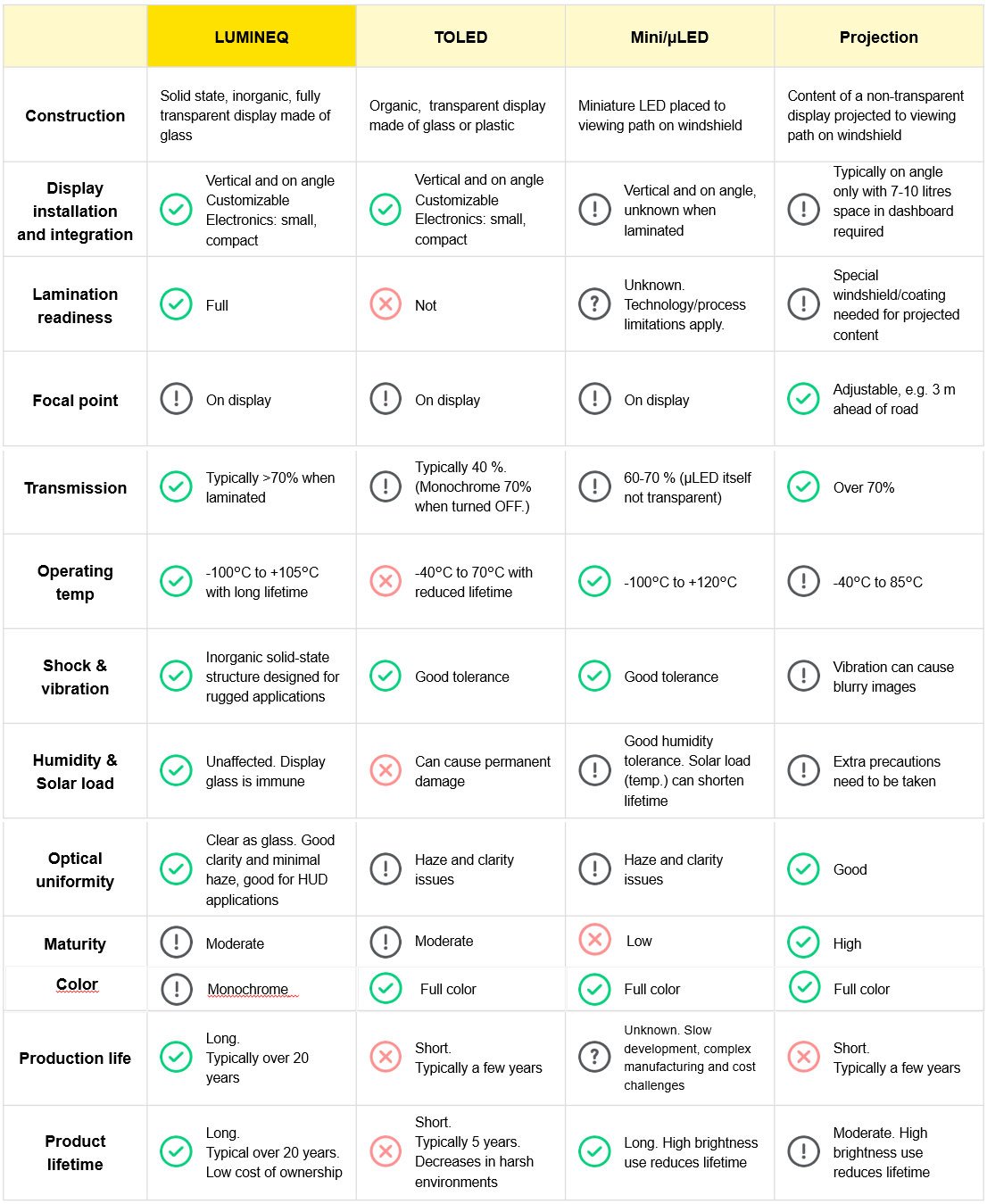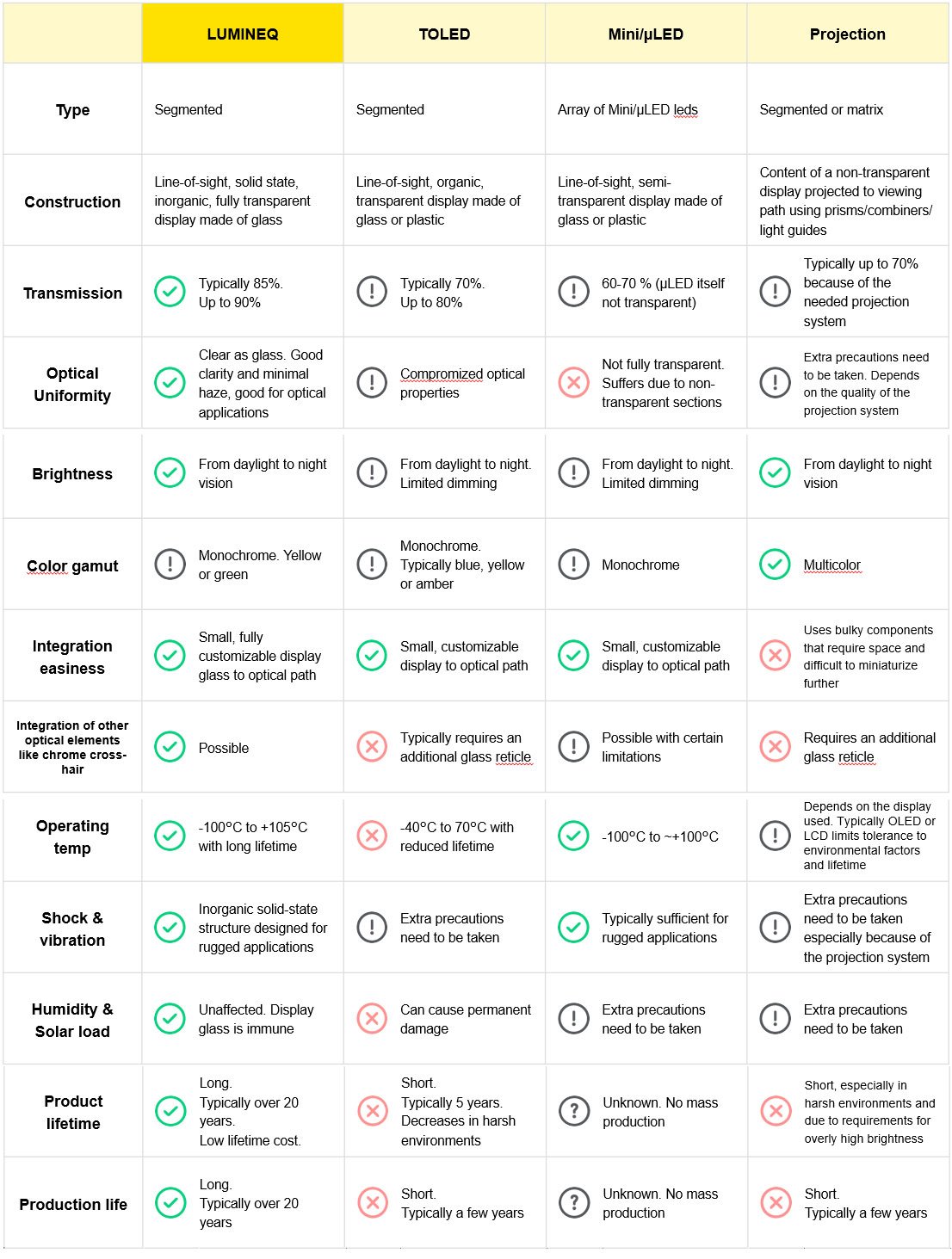A transparent display is an electronic screen that shows the information on a transparent surface, allowing you to see through it.
As display technologies evolve, transparent displays that used to show up only in sci-fi movies are gradually made available in real life. What types of transparent displays are available in the consumer and B2B market? What are the pros and cons of different transparent display technologies? How do you choose the right transparent displays for your application?
Here we provide a detailed report of transparent display comparison, including LUMINEQ, OLED, TOLED, miniLED, and projection in two application areas:
Below is a list of pros and cons of different head-up display solutions in terms of construction, installation, integration, lamination readiness, focal point, transmission, operating temperature range, resistant to shock and vibration, reaction to humidity and solar load, optical uniformity, maturity, color, production life, and product lifetime.

LUMINEQ transparent displays have been used for vans, trains, motorcycles, tractors, and forklifts. Read more about our customer cases from the links below.
Below is a comparison analysis of different transparent displays for optical devices in terms of construction, transmission, optical uniformity, brightness, color, integration easiness, integration of other optical elements like chrome cross-hair, operating temperature range, resistant to shock and vibration, reaction to humidity and solar load, production life, and product lifetime.

Learn more about LUMINEQ transparent displays for optical devices.

Subscribe to our newsletter and get updates on the latest display technologies and industry trends.